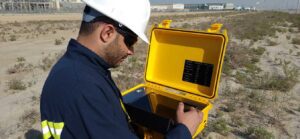As more and more studies create links between adverse health conditions and air pollution, air quality remains a hot topic issue. This is especially true in our current political climate. This September, a reported 7.6 million voices from young to old marched in a series of global climate strikes demanding leadership and change.
Creating a political platform has been made especially challenging, as inspiring individuals such as activist Greta Thunberg are publicly reminding politicians that the environment should not be forgotten in lieu of economic growth.
How do the re-elected liberals plan on addressing the ever-growing demand to battle climate change? Justin Trudeau released a speech on Sept. 24 amid the climate strikes, during which he reflected on “our Liberal vision for the future of Canada”. This includes promises of putting a price on pollution, protecting oceans, phasing out coal, banning single-use plastics, committing to reduce emissions 30% by 2030, and eventually reaching net-zero greenhouse gas emissions by 2050.
A relatively new study (April 2018) conducted by the Fraser institute indicated Canada an environmental leader when compared to most of the world’s wealthiest and developed countries. This study compares and ranks 33 high-income countries in the Organization for Economic Co-operation and Development (OECD) on an array of measurements, including greenhouse gases, biodiversity, air, and water quality. Overall, Canada ranked in 10th place, just behind New Zealand. The study can be found here: https://www.fraserinstitute.org/studies/environmental-ranking-for-canada-and-the-oecd
Struggling countries will look to Canada for guidance. They will investigate the policies we have set in place, our industrial practices, and what we have been doing right to get us to where we are now. Despite there still being a lot of work ahead of us as Canadians, we are moving on the right path as the world leaders in the fight for climate action.













